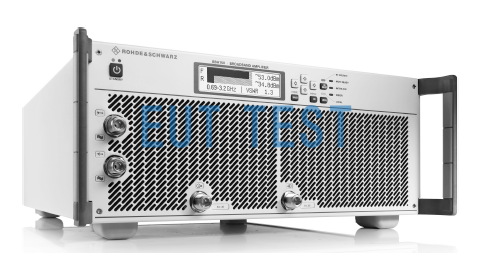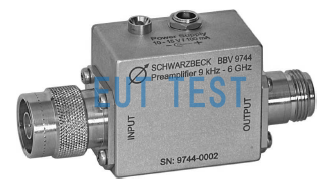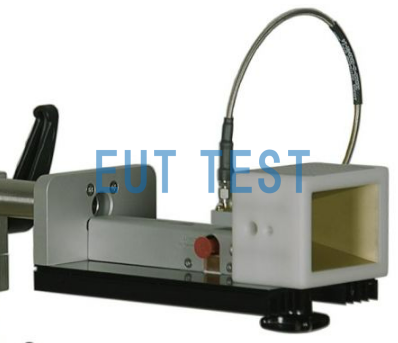EMC preamplifier is one of the important equipments used for EMC test, its main function is to enhance the signal strength and improve the clarity of the signal so as to ensure the accuracy of the test results. In this article, we will introduce in detail the three main types of preamplifiers, their roles, working principle and other specialized knowledge in EMC (electromagnetic compatibility) testing.
Three main types of amplifiers are used in EMC testing:
EMC electromagnetic compatibility testing is an important process to ensure that electronic equipment works properly in an electromagnetic environment and does not interfere with other equipment. During EMC testing, the following types of amplifiers are typically used:
- Power amplifier
- Low Noise Preamplifier
- Preamplifier
1, the role and working principle of power amplifier

EMC Power Amplifiers
The primary function of a power amplifier is to amplify an input signal to a sufficient power level to drive a load. They are typically used to transmit signals or to maintain signal strength during signal transmission. In EMC testing, power amplifiers can be used to simulate the operation of a device under real operating conditions in order to more accurately assess the performance of the device in various electromagnetic environments.
A power amplifier works by increasing the amplitude of a signal so that it can drive a load. It usually employs linear or nonlinear amplification techniques that are able to handle large signal levels and maintain good linearity to avoid signal distortion.
2, The role and working principle of low noise preamplifier

EMC Low Noise Preamplifier
Low noise preamplifiers (LNAs) are designed to amplify weak signals at the very front of the signal chain while minimizing added noise. Because of their superior noise performance, LNAs are often used in receiver systems to help improve signal detectability.LNAs prioritize characteristics such as suppression of the amplifier's output noise and gain flatness, so their output gain is generally not too high.
The principle of operation of an LNA is based on the use of high-gain and low-noise electronic components that minimize the loss of the input signal. It is usually placed between the antenna and the subsequent processing circuitry to ensure that weak signals remain usable while undergoing subsequent processing.
3, The role and working principle of common preamplifier
A common preamplifier is a type of amplifier used to boost a signal, usually at the initial stage of the signal chain. Its main purpose is to boost the signal strength for subsequent processing and analysis. The design of a preamplifier usually focuses on gain and bandwidth to suit the needs of a particular application. The difference between a normal preamplifier and a low-noise preamplifier is that it does not take output noise into account and is only designed to achieve maximum output gain, so to ensure that you can measure small signals, we still recommend that you prioritize the use of EMC low-noise preamplifier products.
A common preamplifier works by taking the input signal and applying the appropriate gain and maintaining a good frequency response so that the signal can be delivered efficiently. The design of a preamplifier usually involves the selection of appropriate components to ensure its performance over a specific frequency range.
Role and function of preamplifiers in EMC testing
Preamplifiers in the EMC industry are typically used to measure weak electromagnetic signals, especially in high frequency applications. These amplifiers are designed to minimize noise and distortion so that low amplitude signals can be captured, making them suitable for subsequent signal processing and analysis.
Preamplifier plays a vital role in EMC testing. It is mainly used in the following areas:
- Improved signal measurability: In EMC testing, the amplitude of a signal can be very weak, and the use of a preamplifier can increase the amplitude of the signal, making it easier to measure and analyze.
- Reduced noise impact: By using low-noise preamplifiers, the effect of noise can be reduced at an early stage in the signal chain, thus improving the reliability of test results.
- Ensure linear response: The preamplifier maintains a good linear response and ensures that the signal is not distorted during amplification, thus reflecting true device performance.
Preamplifier Product Recommendations:
When choosing preamplifiers, EMC testers need to consider the preamplifier's frequency response, gain, noise figure, and applicable scenarios, and also consider whether the electromagnetic test equipment suppliers can provide professional pre-sales and after-sales support services.EUTTEST, as a professional supplier of electromagnetic test equipment, has been deeply cultivating in the field of EMC measurements for more than 10 years, and we recommend the following EMC products that are worth using, based on our installation and use experience at customers' places. Based on our installation and use experience in customers, we recommend the following EMC amplifier products that are worth using:
- If you need to test the radiated or conducted emission of high-frequency signals, you should purchase either a low-noise preamplifier or an ordinary preamplifier, both of which have a very low noise figure and high gain.
Learn more:
- Low Noise EMC Preamplifier Product Recommendations
- After our company sells the preamplifier to the customer, our technicians are on the customer's site to theAmplifier gain commissioning and installation training recordsThe
- If you need to build an EMS radiated or conducted immunity test system, you should use a power amplifier, which is ideally suited for EMC tests that require a high power output with stable gain over a wide frequency band.
Summary:
The above is the relevant expertise of preamplifiers for EMC testing, accurate selection of suitable amplifiers plays a vital role in the EMC testing of electronic equipment, by enhancing weak signals, reducing the impact of noise and ensuring the linear response of the signal to ensure the accuracy of the test results, but also effectively improve the efficiency and effectiveness of EMC testing. If you have questions about preamplifier selection for the EMC industry, please contact EUTTEST for more information.

